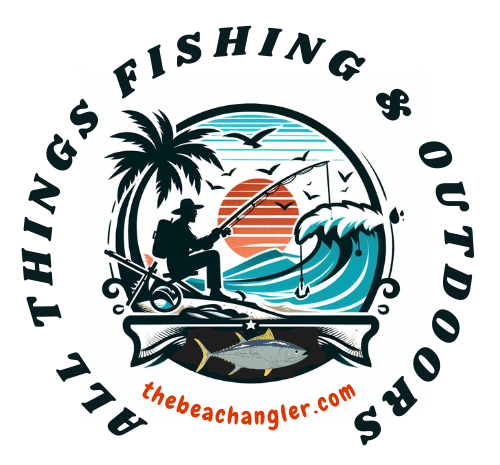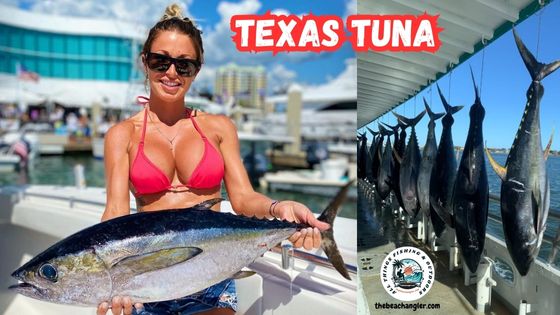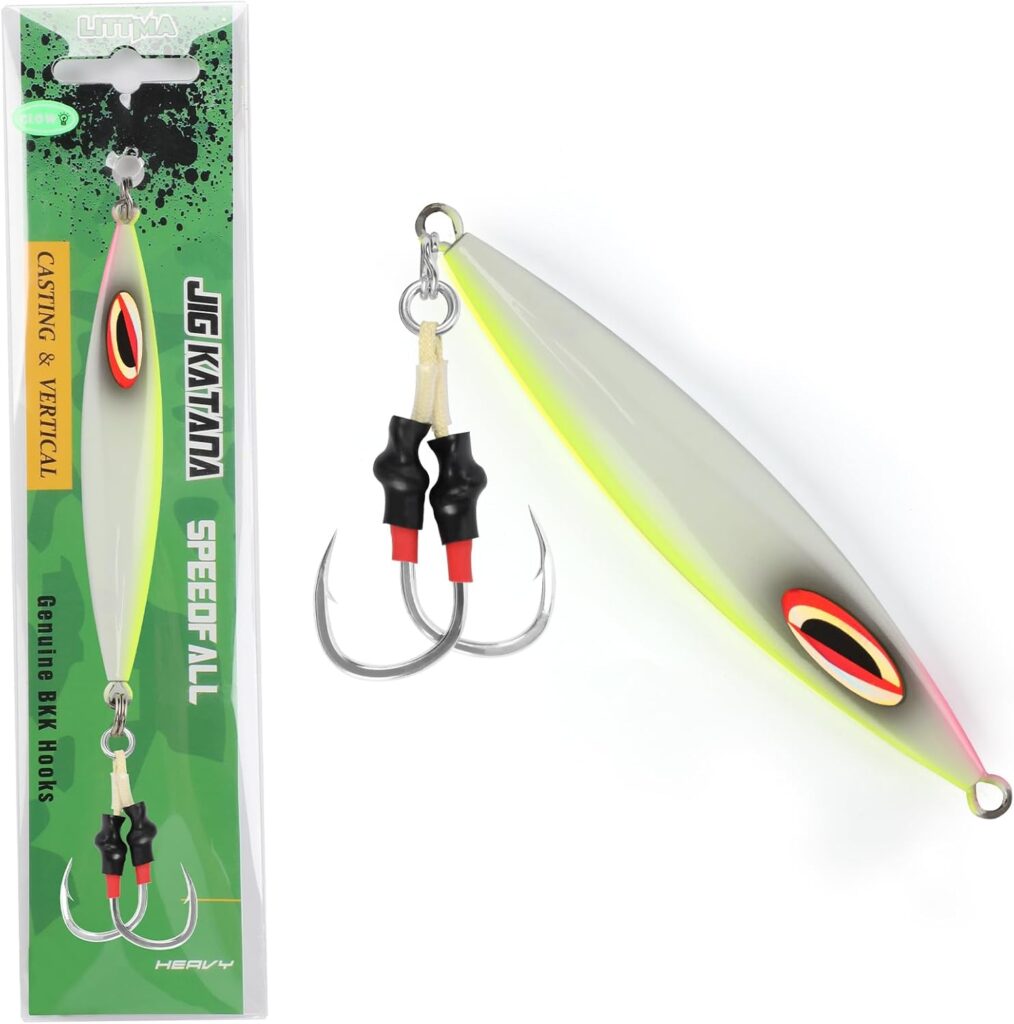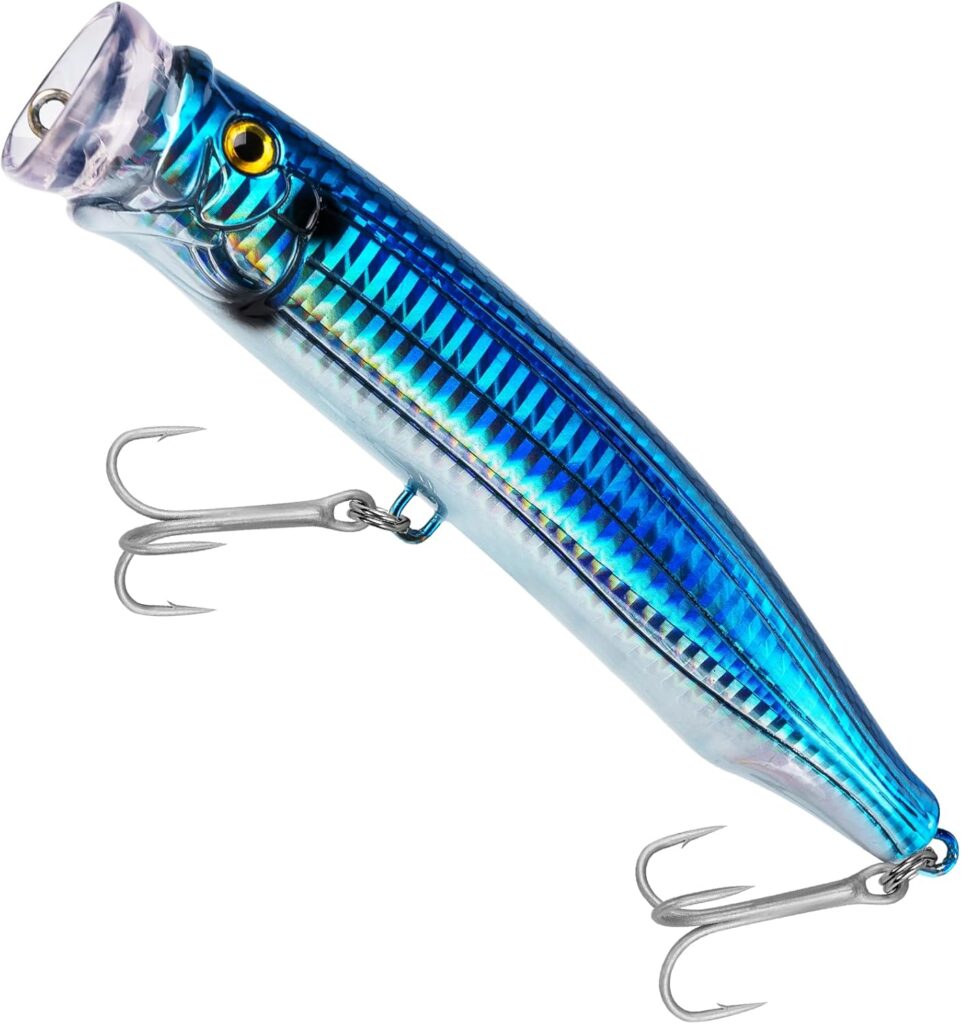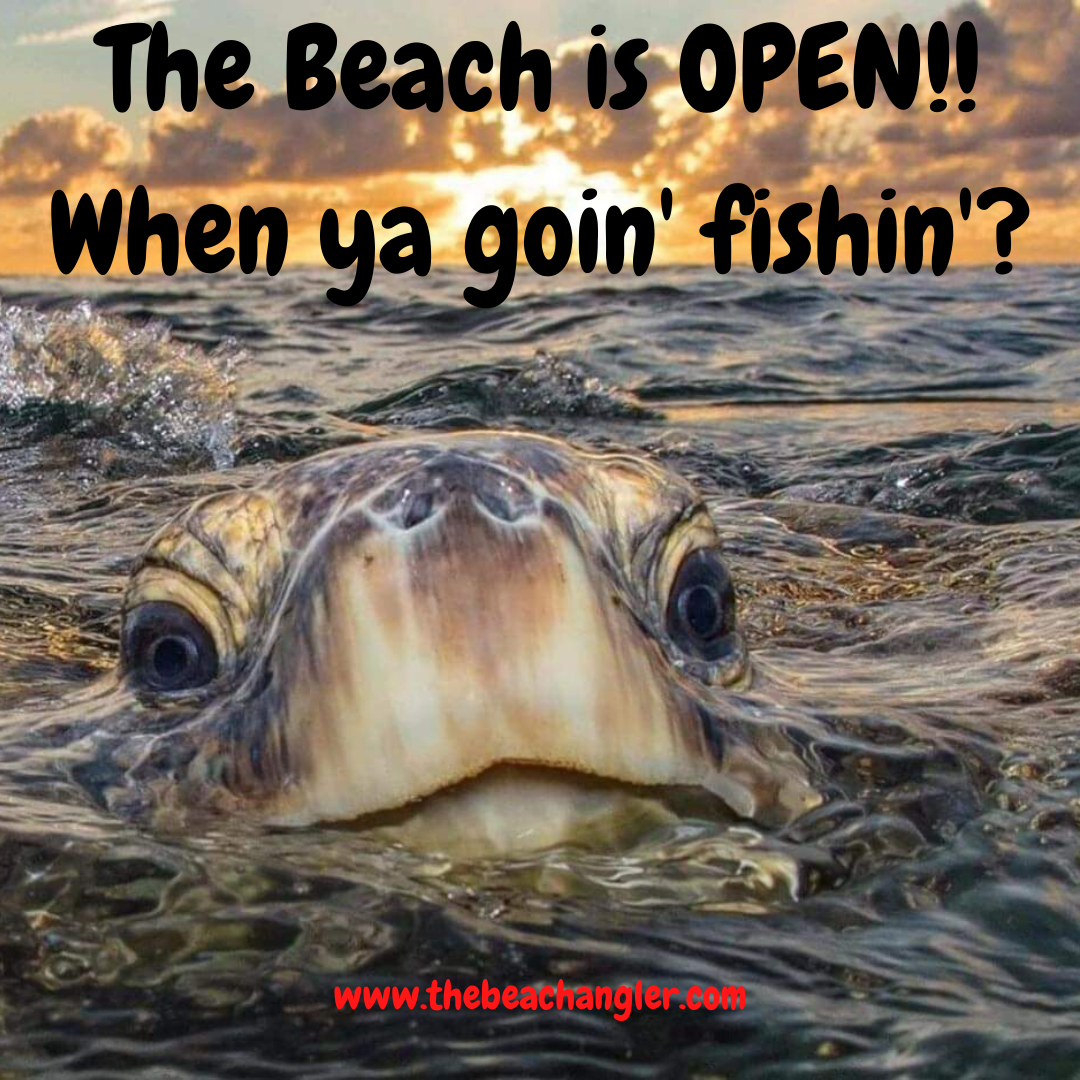Fishing for tuna off the Texas coast offers an exciting and challenging experience for both novice and seasoned anglers. There are bountiful opportunities here, thanks to the unique environmental conditions and the migratory patterns of tuna. Understanding these elements can hugely enhance your success rate out on the water.
QUICK LOOK: 6 Tips for Targeting Texas Tuna
- Choose Your Bait: Catching tuna demands an eye for selecting the right bait, and getting it right can often be the key to a successful day on the water. Whether you opt for live bait or lures, each option comes with its own set of tactics and advantages.
- Master Trolling Techniques: Trolling is a dynamic and highly effective method for catching tuna off the Texas coast. It lets you cover vast areas of water, increasing your odds of finding those elusive schools of fish. But getting it right requires a bit of know-how and finesse.
- Best Seasons: Understanding the seasonal patterns of tuna is key to planning a successful fishing trip off the Texas coast. These patterns are driven by water temperatures and migration habits, dictating when and where these fish are most likely to be found.
- Best Locations: Oil rigs and natural gas platforms, commonly known as ‘floaters,’ are among the best places to find tuna. These structures act as artificial reefs, attracting a wide array of marine life, which in turn lure predators like tuna.
- Try Night Fishing: Drift fishing at night offers an interesting twist on the classic tuna pursuit, capitalizing on the cooler, quieter nighttime hours when tuna are often more active. This method allows for a stationary approach, perfect for targeting schools lurking around.
- Consider Booking a Trip: Exploring the Texas coast for tuna can be elevated by tapping into local charter services. These guided trips provide a fantastic way to harness local expertise and explore the most promising waters for a successful catch.
Effective tuna fishing starts with knowledge of the area and the behavior of these fish. The Gulf of Mexico, for instance, provides a rich and diverse habitat that attracts both yellowfin and blackfin tuna. These pelagic species are known to follow warm currents, making the waters off Texas an ideal playground for them during specific times of the year.
Several fishing techniques can be utilized in these waters. Trolling, chunking, and using lures are among the most common methods. Each has its distinct advantages and can be more or less effective depending on the time of year and the conditions on the day.
Being prepared with the right strategy is essential. For instance, trolling allows you to cover large areas of water, potentially increasing your chances of encountering schools of tuna. Meanwhile, chunking, though more stationary, can be incredibly effective when executed correctly at the right spots.
Success in tuna fishing not only means landing a big catch but also ensuring safety and sustainability. It’s important to adhere to local fishing regulations and quotas to preserve the fish populations for future generations. Partnering with a knowledgeable captain or crew can also make a big difference, especially for those new to the region.
Live and Artificial Bait Options
Catching tuna demands an eye for selecting the right bait, and getting it right can often be the key to a successful day on the water. Whether you opt for live bait or lures, each option comes with its own set of tactics and advantages.
- Live bait mimics the natural diet of tuna and can be irresistible to them. Common choices include baitfish like mullet, sardines, squid, and herring. These can be caught using cast nets or sabiki rigs. This approach requires a bit more prep and handling, but the payoff can be significant, especially if the day is clear and the water is calm.
- Artificial lures offer versatility and ease. Squid-like lures with colorful skirts, jigs, and spoons can attract tuna by imitating their natural prey. These tools come in handy when the water’s murky or when fish are a bit more shy and scattered.
- Chumming also plays an important role when you’re after tuna. By strategically cutting up butterfish or any oily bait and dispersing it in the water, you create a scent trail that can bring tuna right to your boat. It’s not uncommon to team up with nearby shrimping boats to get hold of additional chum since this can up the ante significantly.
- Having a variety of bait options on hand can pay off, especially when conditions change or if your primary method isn’t yielding results. Switching from live bait to a bright lure might just make the difference between a quiet trip and a productive day.
The weather, water clarity, and even the time of day can all influence how tuna respond to different baits, so adaptability remains key to matching your approach to the conditions you face.
Mastering the Techniques of Trolling and Its Variations
Trolling is a dynamic and highly effective method for catching tuna off the Texas coast. It lets you cover vast areas of water, increasing your odds of finding those elusive schools of fish. But getting it right requires a bit of know-how and finesse.
- High-speed trolling has become a go-to technique for many seeking tuna. The speed at which you troll can make all the difference, replicating the quick movement of baitfish in a natural way. This strategy is most effective when the fish are more active, usually in warmer water temperatures.
- Choosing the right combination of lures and bait is crucial. Artificial lures, particularly those resembling local baitfish, work well. When utilizing live bait, ensure it’s hooked in a manner that allows it to swim naturally, not spinning or dragging unnaturally in the water.
- Pay attention to the trolling path. Zigzag patterns are often recommended, as they can simulate the erratic path of prey, enticing tuna to strike. Monitor the water’s surface for signs of tuna, like jumping fish or diving birds, to pinpoint where to focus your efforts.
- Weather plays a big role, too. Overcast days might require more vibrant, flashy lures, while on sunny days, subtler options might perform better. Being able to adjust your trolling setup to match these conditions can significantly boost your success rate.
Seasonal Insights and When to Expect the Best Tuna Catches
Understanding the seasonal patterns of tuna is key to planning a successful fishing trip off the Texas coast. These patterns are driven by water temperatures and migration habits, dictating when and where these fish are most likely to be found.
Yellowfin tuna, in particular, are abundant from July to October, coinciding with warmer water temperatures ranging from 70 to 90 degrees. During these months, their population peaks as they follow the warm currents into the gulf, making it prime time for fishing enthusiasts.
For blackfin tuna, the cooler months can yield excellent opportunities. They often gather around deepwater platforms in the winter, attracted by the rich food sources found there. This seasonal movement is something anglers can capitalize on, especially if they prefer targeting tuna in less crowded conditions.
Tuna tend to follow baitfish, so observing baitfish activity can provide clues about the best times for fishing. Additionally, overcast or slightly windy conditions can encourage tuna to feed more actively, so adjusting your outings based on the weather can pay dividends.
Planning your fishing around these seasons involves not only knowing when the fish are most available but also ensuring you’re ready with the right gear and techniques suited for the conditions you’re likely to encounter.
Ideal Fishing Locations Around the Texas Coast
Selecting the right fishing spot can significantly influence your success when targeting tuna. The Texas coast offers a range of vibrant fishing environments, from open waters to intricate bay systems, each with its unique set of advantages.
The Gulf of Mexico is a hotspot for tuna, providing the deep, warm waters that these fish favor. Tuna can often be found in schools here, drawn by the cornucopia of baitfish and nutrient-rich currents. This area’s vastness requires strategic planning, often using technology like GPS and sonar to locate potential tuna schools.
Exploring areas near the coastline and bays can also be fruitful. While tuna are typically oceanic, they sometimes venture closer to shore, especially following baitfish. These instances offer an exciting opportunity for those looking to fish a bit closer to land.
Oil rigs and natural gas platforms, commonly known as ‘floaters,’ are among the best places to find tuna. These structures act as artificial reefs, attracting a wide array of marine life, which in turn lures predators like tuna. Drifting near these floaters can provide prime conditions for an exhilarating catch.
Understanding the movement and preferred habitats of tuna in these areas allows you to plan more effectively and select spots based on where tuna are most likely to congregate. Combining local knowledge with modern technology and keen observation of the environment can heighten your chances markedly.
Night Fishing Strategy and Drift Fishing Techniques
Drift fishing at night offers an interesting twist on the classic tuna pursuit, capitalizing on the cooler, quieter nighttime hours when tuna are often more active. This method allows for a stationary approach, perfect for targeting schools lurking around.
- Choosing the right spots for drift fishing is crucial. Floating structures like oil rigs present ideal night fishing opportunities as they attract countless baitfish, which in turn brings tuna closer to the surface. Positioning your boat to drift over these areas can increase your likelihood of encounters.
- Utilizing sonar is a game changer when night fishing. By pinpointing schools of baitfish, you ensure that your drifting path is optimal, floating directly over potential tuna hotspots.
- Glow-in-the-dark lures are particularly effective at night. Their shimmering presence mimics prey under low light, making them highly attractive to hungry tuna. Jigs and large, brightly colored lures enhance your lure’s visibility in the dark water.
- Chumming remains a helpful tactic at night. Dispensing aromatic bait into the water can create an enticing feeding area that draws tuna toward your boat. Timing and consistency in chumming can greatly impact its effectiveness, so consider having a strategy in place.
- Having heavy-duty tackle is essential to handle any large tuna that bite during these late hours. The combination of strong lines and robust reels ensures that you’re prepared, regardless of the fish’s size or strength.
Incorporating these tactics requires keen awareness and readiness to adapt as conditions shift. Arming yourself with patience and an understanding of these night fishing strategies can make the nocturnal hunt both rewarding and memorable.
Tips and Tricks for a Successful Tuna Fishing Adventure
Preparing for a successful tuna fishing trip off the Texas coast requires not just understanding techniques and locations but also paying attention to a range of finer details. These can make a big difference in ensuring your trip is both fruitful and enjoyable.
- Checking tide conditions before heading out is crucial. Fishing during slack tide often yields the best results since tuna may be more actively feeding when currents are less intense.
- Collaborating with seasoned captains and crews can provide valuable insights, especially if they’re familiar with local waters and fish behavior. Their expertise in navigation and tuna habits can boost your chances of snagging a catch.
- When planning your trip, factor in effective chumming techniques. Regularly dispersing chum not only attracts more tuna but can also hold them in your vicinity for longer periods, increasing your chances of catching a sizable fish.
- Safety remains paramount, so make sure your boat is well-equipped with safety gear, and everyone on board is aware of emergency procedures. Being prepared ensures that you can handle any unexpected situations.
- Lastly, maintaining your fishing gear is just as important. Regular checks and maintenance on rods, reels, and lines keep them in top condition, reducing the risk of technical failures when you’re out on the water.
Taking these factors into account prepares you for a successful fishing adventure, where the thrill of the catch is matched by the satisfaction of a well-executed plan.
Tuna Fishing Safaris on the Texas Coast
Exploring the Texas coast for tuna can be elevated by tapping into local charter services. These guided trips provide a fantastic way to harness local expertise and explore the most promising waters for a successful catch.
Galveston Party Boats and Williams Party Boats offer excursions tailored specifically for locating and capturing tuna. With knowledgeable crews who understand the intricacies of tuna habits and local conditions, these charters can significantly enhance your fishing adventure.
In Freeport, you’ll find Tuna Safaris, like Smith and Sons Charters, that specialize in off-shore fishing trips. These deep-sea adventures are designed for those willing to venture further into the Gulf’s promising fishing grounds, equipped with the latest tech and seasoned experts.
Deep Sea Headquarters in Port Aransas hosts a range of tuna fishing adventures, where the focus is on both the thrill of the catch and the beauty of the coastal environment. Charter services here provide a blend of excitement, education, and a love for the ocean.
Leveraging these safari-style trips allows you to focus on the hunt itself, while experienced crews handle navigation, setup, and safety procedures. This setup ensures your trips are less about logistics and more about enjoying the action.
Booking these guided trips during peak fishing seasons increases your chances of success, merging timing, local knowledge, and well-honed techniques into a cohesive fishing experience.
These excursions also present an opportunity for learning. Not only do you stand to catch tuna, but interactions with experienced anglers and captains naturally foster an exchange of tips and strategies that you can carry into future trips.
Check Out Our Most Recent Articles:
- Review Of The Daiwa Caldia Lt Spinning Reel
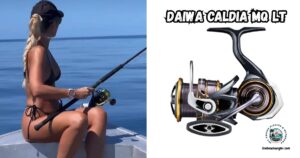
- What Is Sail Line Fishing And How To Use It?
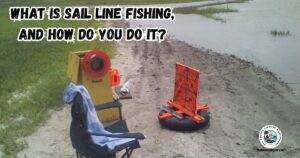
- Review Of The Penn Slammer IV Spinning Reel
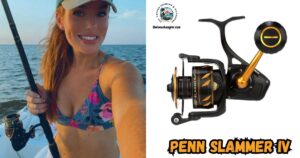
- Fishing Lake Calcasieu: 14 Tips And Tactics
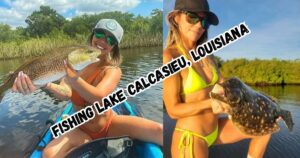
- Bassdash American Saltwater Cast Nets

- 8 Tips on Wade Fishing The Flats For Redfish And Black Drum

As always, stay safe, enjoy the journey and please try to leave it cleaner than you found it. If you have any comments, questions, ideas, or suggestions please leave them in the comment section below and I’ll get back to you ASAP. You can follow us on Facebook: Rex The Beach Angler, Instagram: thebeachangler7, Twitter: @AnglerBeach, and YouTube: Man Art Creations.
P.S. – Thanks so much for checking out our blog, we really appreciate it. Just so you know, we may receive a commission if you click on some of the links that appear on our site. This helps us keep our content free and up-to-date for everyone. We appreciate your support!
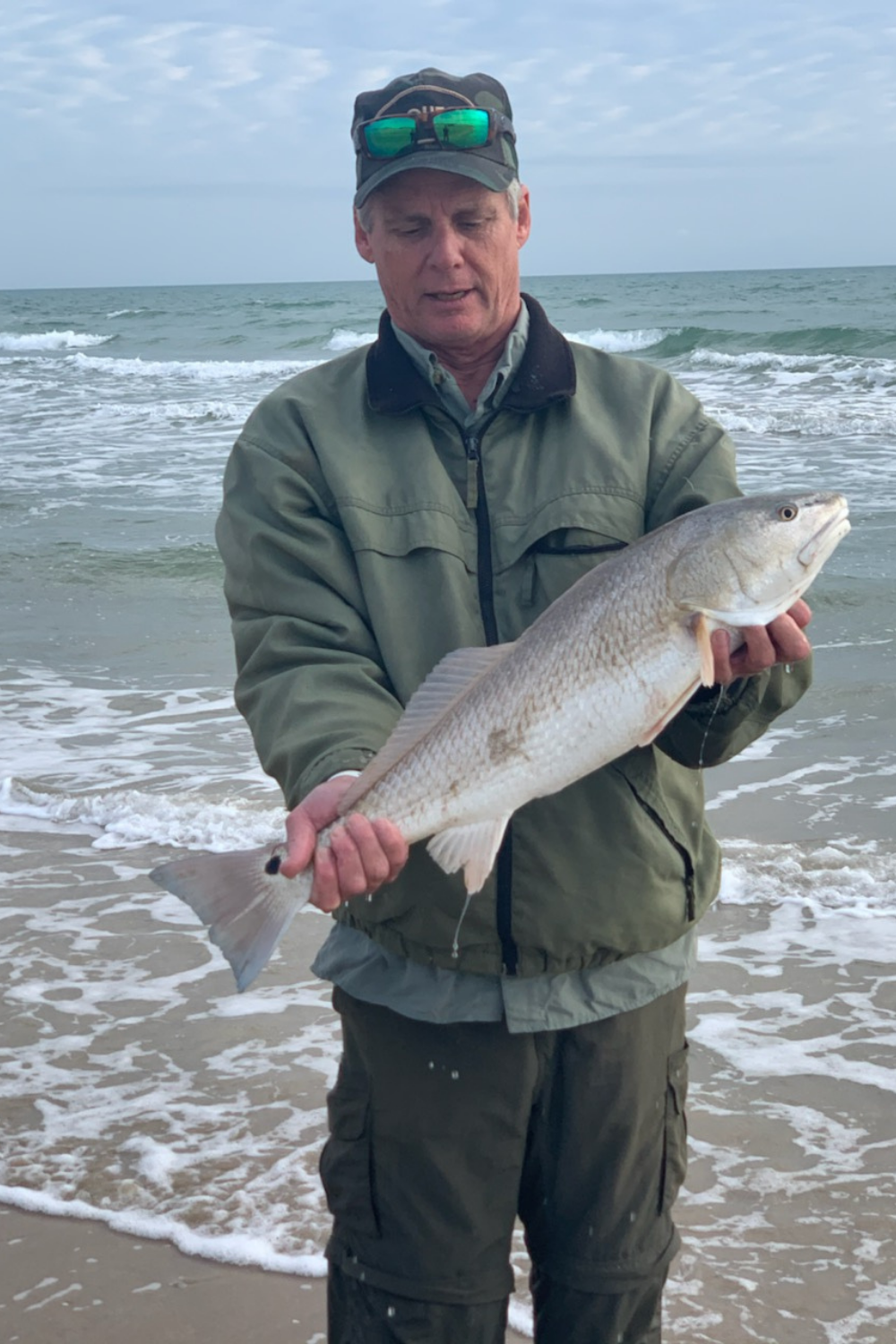
A life long surf fisherman with 50+ years of experience, I am also an avid hunter and outdoorsman. I will be sharing my passion for the outdoors with you so be prepared for hunting, fishing, camping, hiking and more. Along with gear reviews and the latest trends and innovations in the outdoor industry.
